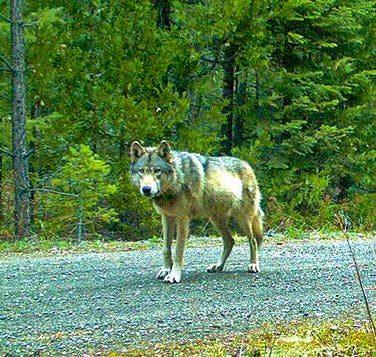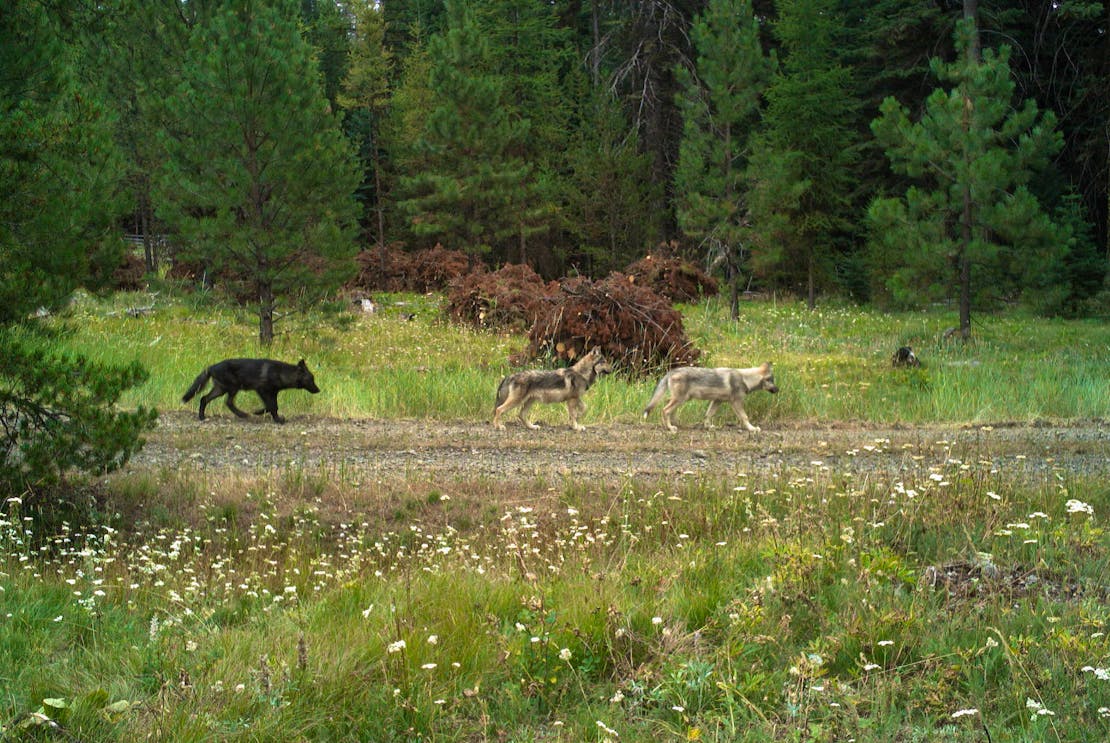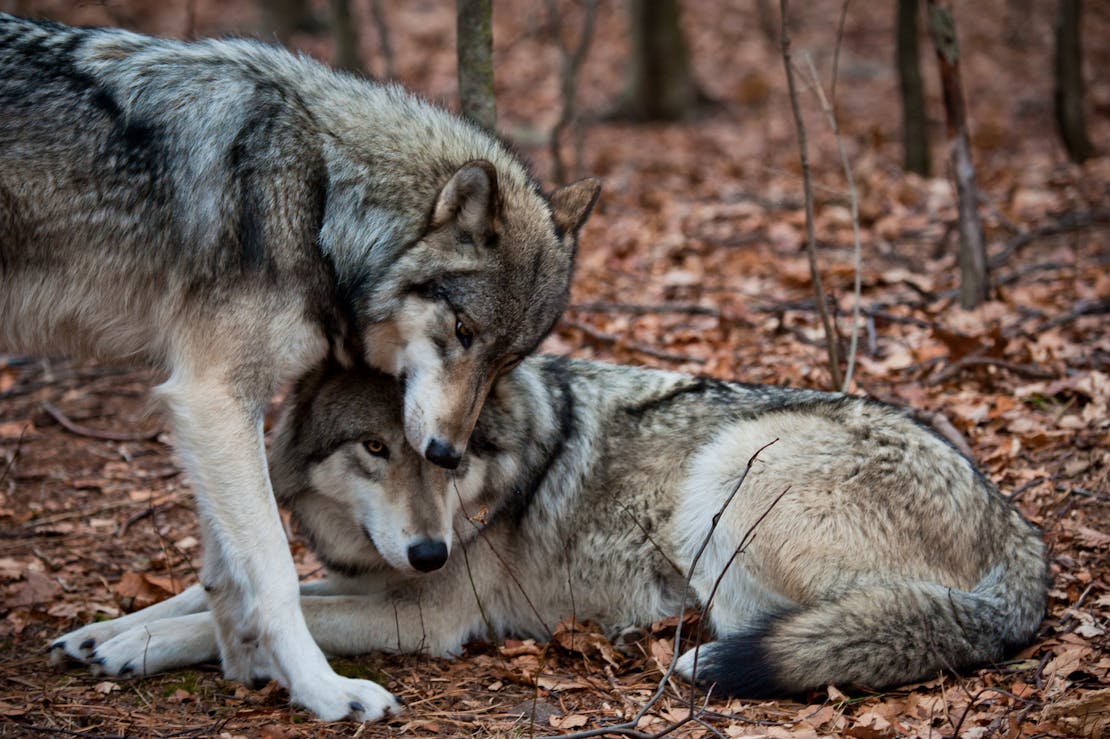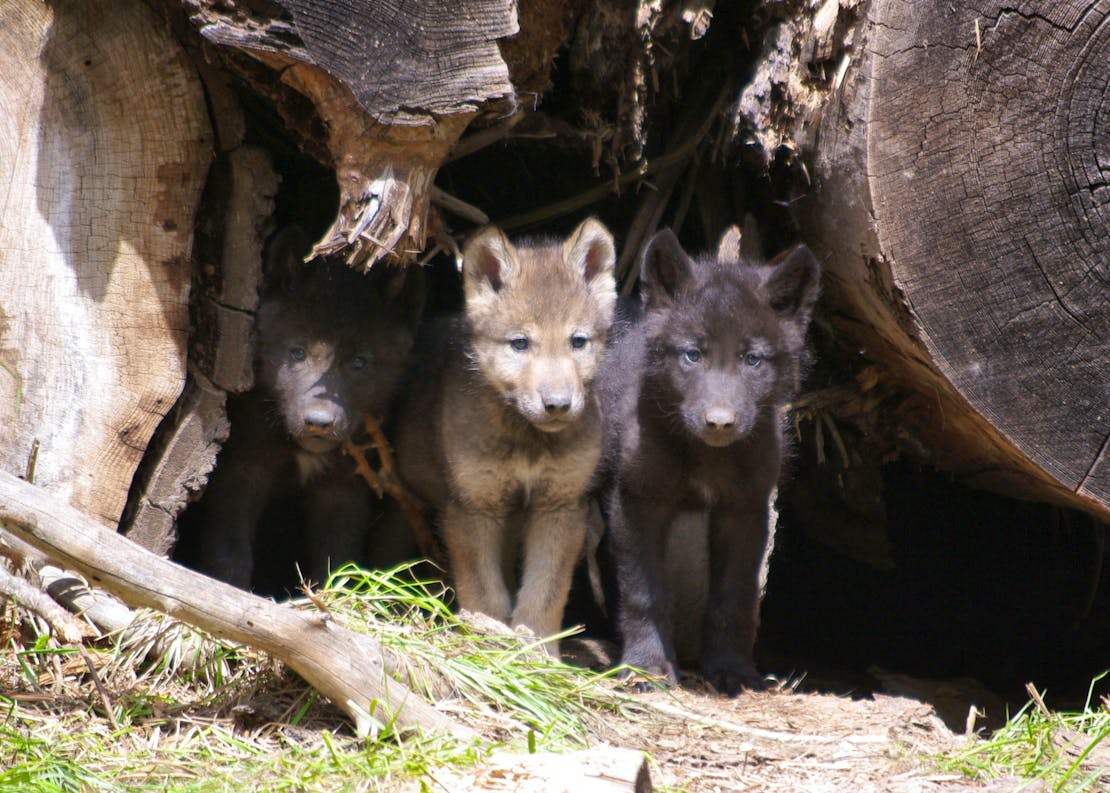They patrol the conifer forests and meadows of northern California. They roam through the glacier-scoured canyons and around giant sequoias in the southern Sierra Nevada. Gray wolves (Canis lupus) are no strangers to the Golden State.
Get to know the wolves calling California home in this Q&A with Defenders of Wildlife’s California Program Director, Pamela Flick.
How many gray wolves are there in California today?
There are at least 70 wolves living throughout the state. These wolves make up the 10 active wolf packs and include individuals in three other designated “areas of wolf activity.” There are also several known dispersing individuals.
As you can see in the map above, gray wolves are primarily found in northeastern California. The Yowlumni Pack, however, established a territory in 2023 in the southern Sierra Nevada, more than 200 miles south of any known wolf packs at that time. Two unknown wolves were detected at separate times in the eastern Tehachapi Mountains in Kern County, which is even farther south than where the Yowlumni Pack ranges.
There were about 90 years where wolves were not seen in California. What happened?
Like wolves throughout the country, gray wolves in California were hunted and trapped to near extinction and subject to bounties for their heads and hides. The last known wild wolves in California were killed in eastern San Bernardino County in 1922 and in Lassen County in 1924.
Then, in late 2011, a wolf known as OR-7 crossed over the state line from Oregon. He became the first known wild wolf in the Golden State in nearly 90 years. OR-7 dispersed from northeastern Oregon’s Imnaha Pack, which descended from wolves who had naturally recolonized Oregon in 2008 from central Idaho after the successful gray wolf reintroduction there and in Yellowstone National Park in 1995 and 1996.
In fact, all the wolves currently found in California have either naturally dispersed here from other states or were born here. We’ve learned through genetic analysis that most of the wolves in the state are known to have come from Oregon. There are a few individuals whose origins remain unknown, but they are all believed to have come from the Northern Rockies population after the mid-1990s reintroductions, via Oregon or directly.
How are California and Oregon collaborating as wolves travel over the border?
California and Oregon Departments of Fish and Wildlife have been in close contact and coordination since the early days of OR-7’s travels southward. There have been quite a few wolves that have crossed over our shared state line — in both directions — and the two departments continue to collaborate on wolf recovery and conservation efforts.
Wolves have traveled from California to Oregon?
Yes! There have been several known wolves to travel from California to Oregon, including wolves born here in California. A male wolf from the Lassen Pack, known as LAS13M, traveled to Lake County, Oregon. A female, OR-115, was spotted with him in 2021 and the pair had three pups in 2022. With the addition of their pups, these wolves became southern Oregon’s Gearhart Mountain Pack.
Why are wolves important to the California landscape?
Wolves are important predators and support healthy ecosystems where they live. They tend to hunt and cull old, sick and injured native prey species like deer and elk, keeping these populations healthy.
What is next for California’s wolves?
We have come a long way in the over 13 years since OR-7 first entered California, but there needs to be sustained efforts to reduce conflicts between wolves and livestock.
Defenders has advocated for and supported continued funding over the years for wolf-livestock compensation. We successfully secured the initial $3 million to launch this state program as a pilot in 2021, as well as an additional $600,000 last year. This year, the California Legislature included $2 million in the state budget for the program, which directly compensates ranchers for livestock losses caused by wolves and reimburses livestock producers for the purchase of nonlethal conflict reduction tools and strategies. Some proven, nonlethal solutions include using range riders and livestock guardian dogs who patrol and protect herds, and turbofladry, which deter wolves from entering an area during periods of high vulnerability like calving and lambing seasons.
What can our readers do to help protect wolves?
Anyone can help wolves in California and across the United States by sharing accurate information about these animals and their recovery. Wolves in California are protected under both the federal and California Endangered Species Acts. Advocating for continued protections at the federal level can help wolves across the country. If you live in California or a state with wolves, you can also support programs that promote non-lethal conflict reduction methods.











